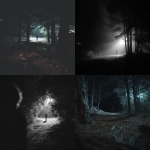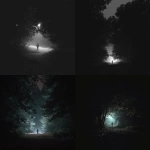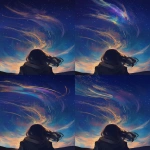Explore the Best AI Image Gallery

Quantum Quandary: Breakthroughs Reshaping the Creative Landscape
The dawn of quantum computing is radically transforming numerous domains, bringing new possibilities for innovation, efficiency, and creativity. The creative industry is one such sector reaping the benefits in unprecedented ways.
The Quantum Leap in the Creative Realm
Quantum computing harnesses quantum mechanics' properties to process information faster and more accurately. This advanced computing power opens up intriguing avenues for creativity. For instance, the detailed modeling and rendering processes crucial to the graphic design and animation industries can benefit from these advancements, leading to higher resolution images and improved visual effects.
Potential Uses
Quantum computing's multi-dimensional data processing capabilities can breathe life into complex virtual and augmented reality applications. It can analyze vast amounts of data from diverse sources to create more realistic virtual environments. Furthermore, in soundtrack creation and movie editing, the enhanced processing power can help artists work on complex projects that would have been unmanageable with traditional computing power.
Ethical Considerations
As with any other technological breakthrough, quantum computing presents its own unique set of ethical dilemmas. The primary concerns revolve around privacy and security because quantum computers have the potential to break virtually any encryption in current use, posing significant cybersecurity threats. The creative industry must anticipate such challenges and develop ethical usage guidelines to avoid misuse.
Future Trends
The entrance of quantum computing into the mainstream has the potential to revolutionize the creative industry as we know it. Advanced AI applications can initiate a new era of personalized content, animations, designs, and visual effects. While we're just at the beginning of this quantum journey, it's clear that this technology will open up opportunities that are currently unimaginable.
Conclusion
The remarkable capabilities of quantum computing are paving the way for a new wave of technological transformation. As we navigate through this quantum quandary, it's crucial to balance the immense creative potential it offers with sound ethical considerations. Only then can we ensure a secure, vibrant, and evolving creative landscape.


















](https://images.ai-img.art/thumbnails/150/7031d7eb0c7618d6524b18c5b472fac7c5e964fd4286dcfbcd356aef54e4c53a.webp)






](https://images.ai-img.art/thumbnails/150/1610203f7d5eb18736cc1b43ca4fb910a610607efd6639d790e044af28ffae4d.webp)




](https://images.ai-img.art/thumbnails/150/27897356e1d92d128c83ad5779de1ae66751f0943d921bda9c2a162cc287b664.webp)


](https://images.ai-img.art/thumbnails/150/8caf7e37ecfe36725a0c33aa50e5793dec55873c2718a9df1bd777db77388e8a.webp)







](https://images.ai-img.art/thumbnails/150/3ad927a2a8f234479e35650778fd4cec400e85de5299fd8ebd646e7220ae242f.webp)

](https://images.ai-img.art/thumbnails/150/b6fcbcc7556afc20e3fc7a1b5953d65a98e64337d72c93d4d8988cc3f3d552a2.webp)


](https://images.ai-img.art/thumbnails/150/840bfa50efc7ee165056fd61e66b3be02ffcd1b04ae89966358761d439af7602.webp)
](https://images.ai-img.art/thumbnails/150/ddeb40d1b60f9200e47b41141d7f1b5d626d81dbffc2daf46e83def5a82d9b4c.webp)

